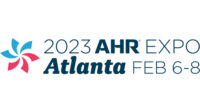Over the past two years, the National Board Inspection Code (NBIC) committee has revised and updated the NBIC to ensure it continues to provide up-to-date requirements for the installation, inspection, repair, and alteration of pressure-retaining items and pressure relief devices.
The committee approved 78 code change action items across all four parts. Here is a summary of the major changes to the 2023 NBIC.
Part 1: Installation
- New requirements for natural gas, propane, and No. 2 fuel oil in Part 1, 1.6.5.
- Several updates and revisions to Part 1, Supplement 5, Installation of Yankee Dryers.
- New Supplement 10, Overpressure Protection Requirements for Organic Fluid Vaporizers.
- New Supplement 11, Installation of High-Pressure Composite Vessels.
Part 2: Inspection
- New Section 1.7, which provides requirements for scrapping pressure-retaining items. This section also includes the new form NB-480, Scrapping of Pressure-Retaining Items Form.
- New Section 2.3.6.11, Inspection of Vessels for Pressures Above 10,000 psi. This section provides guidance for inspecting pressure vessels designed for pressures at or above 10,000 psi (68.95MPa).
- New Sections 2.5.7.1, 2.5.7.2, and 2.5.7.3, which provide requirements for testing and operational inspection of pressure relief valves, non-reclosing pressure relief devices with pins or bars, and rupture disks.
- New Section 5.2.4, which provides guidelines for the temporary removal of a nameplate for external inspection, cleaning, or painting of a vessel with nameplate stand-off brackets.
- Several revisions and format changes to forms NB-6 and NB-7. Form NB-5 has been deleted.
- Several additions to Section S1.6 for safety valves on locomotive boilers.
- New Section S2.10.2.3, providing requirements for the inspection of riveted seams. This section also includes a new Figure S2.10.2.3.
- Several updates and revisions to Part 2, Supplement 5, Inspection of Yankee Dryers.
Part 3: Repairs and Alterations
- Several revisions to Section 1.5 that provide more detailed descriptions of the requirements for a National Board Certificate of Authorization holder’s quality system.
- New audit requirements in Sections 1.6.6.2 s), 1.6.7.2 s), and 1.6.8.2 s).
- New language in Sections 1.6.6.2 t), 1.6.7.2 t), and 1.6.8.2 t) that requires the authorized nuclear inspector to hold the N, I, and R endorsements.
- Plugging of heat exchanger tubes with an outside diameter of three-quarters of an inch (19 mm) and smaller when explosion welding is used as the tube plugging method has been added to the list of routine repairs in Section 3.3.2 e).
- Several updates and revisions to Part 3, Supplement 5, General Requirements for Repairs and Alterations to Yankee Dryers.
Part 4: Pressure Relief Devices
- New Section 2.4, Overpressure Protection for Organic Fluid Vaporizers.
- New Sections 3.2.5.1, 3.2.5.2, and 3.2.5.3, which provide requirements for testing and operational inspection of pressure relief valves, non-reclosing pressure relief devices with pins or bars, and rupture disks.
- New Sections 4.10 and 4.11, which provide requirements for the use of personnel not in the VR certificate holder’s employ and for annual audits of the VR certificate holder’s quality system.
- New Section S4.4, which provides guidelines for the inspection and repair of weight loaded vents.
Changes for All Four Parts:
The text in Section 8 of the NBIC (Preparation of Technical Inquiries to the National Board Inspection Code Committee) has been deleted and replaced with a statement directing inquirers to the NBIC’s Introduction for guidance on submitting inquiries.
The definition for “Authorized Nuclear Inspection Agency” has been revised to specify the required qualifications that need to be met to be classified as an Authorized Nuclear Inspection Agency.
New definitions for “interference fit,” “labeled,” “listed,” “practicable,” “remote visual inspection,” and “scrapped” have been added to the glossary.
The 2023 NBIC Edition can be purchased at nationalboard.org.
By Jonathan Ellis, staff engineer, National Board of Boiler and Pressure Vessel Inspectors









